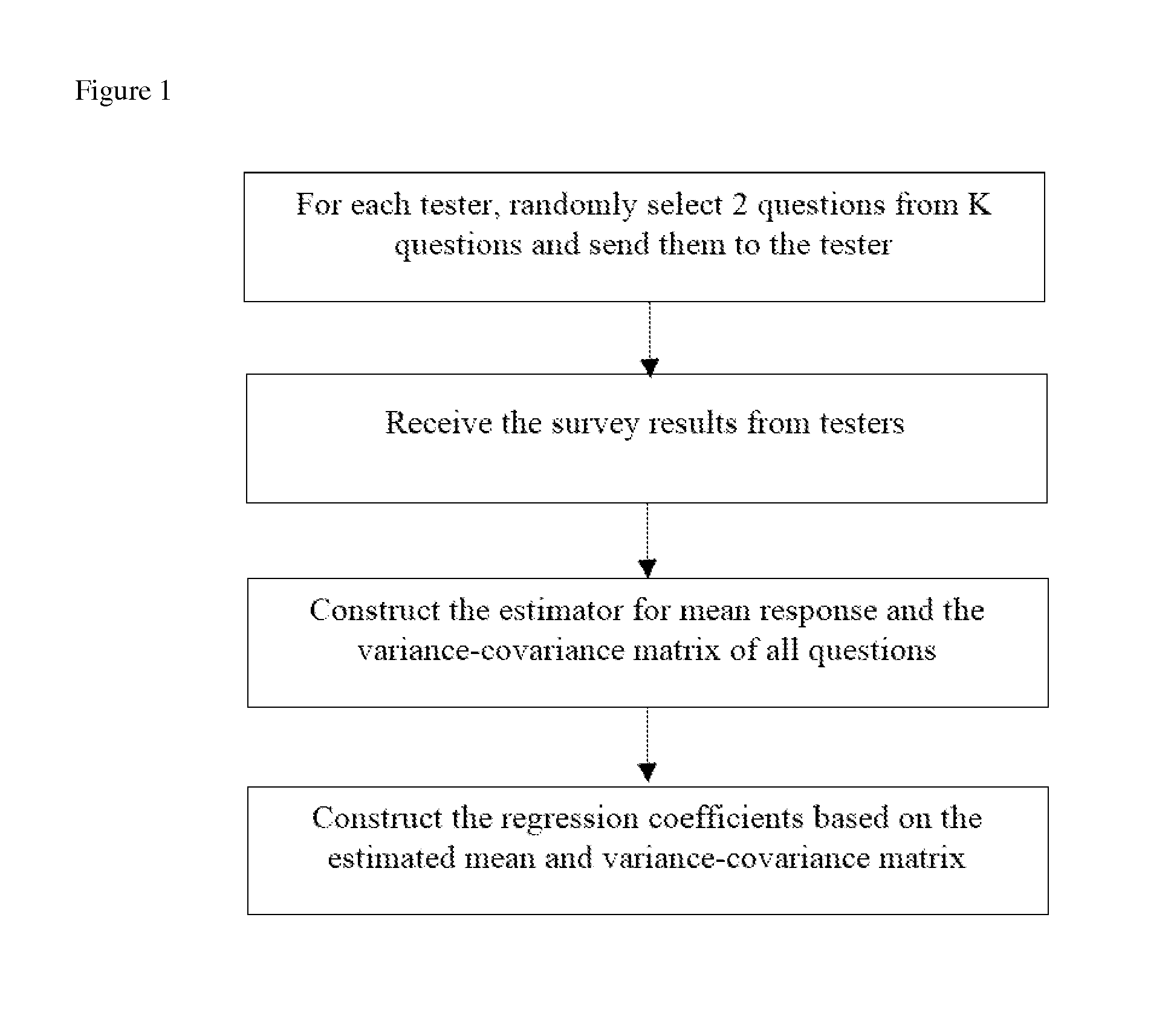Using Partial Survey to Reduce Survey Non-Response Rate and Obtain Less Biased Results
a partial survey and survey technology, applied in the field of statistics, can solve the problems of biased results and short surveys that may not meet the need of collecting complete information, and achieve the effects of reducing survey non-response rate, less biased estimators, and better estimation performan
- Summary
- Abstract
- Description
- Claims
- Application Information
AI Technical Summary
Benefits of technology
Problems solved by technology
Method used
Image
Examples
Embodiment Construction
Statistical Methods
[0014]Let K denote the number of survey questions. Since internet can essentially reach almost everyone without major cost, the survey sample could be very large. Let N denote the survey sample (which is generally in the magnitude of hundreds of thousands or millions). We call a person who receive the survey as a tester. Instead of sending all survey questions to each tester, only a subset of survey questions are randomly sent to the tester. For example, if there are a total of 20 questions and each tester only receives 2 questions, there are)(220=190 possible ways of selecting 2 questions. If a million people are surveyed, approximately each pair of questions can be surveyed from 1000000 / 190=5263 testers, which is still a very large sample. Let M denote the number of partial survey question and we call the survey method as Partial Survey with M questions (PSM).
[0015]Here are what to be considered for selecting M:[0016]The purpose of the survey. If the purpose of ...
PUM
 Login to View More
Login to View More Abstract
Description
Claims
Application Information
 Login to View More
Login to View More - R&D
- Intellectual Property
- Life Sciences
- Materials
- Tech Scout
- Unparalleled Data Quality
- Higher Quality Content
- 60% Fewer Hallucinations
Browse by: Latest US Patents, China's latest patents, Technical Efficacy Thesaurus, Application Domain, Technology Topic, Popular Technical Reports.
© 2025 PatSnap. All rights reserved.Legal|Privacy policy|Modern Slavery Act Transparency Statement|Sitemap|About US| Contact US: help@patsnap.com



